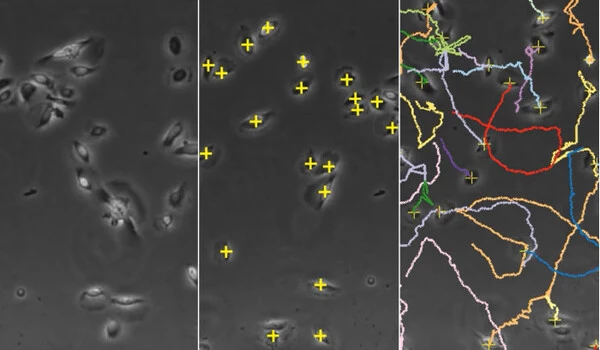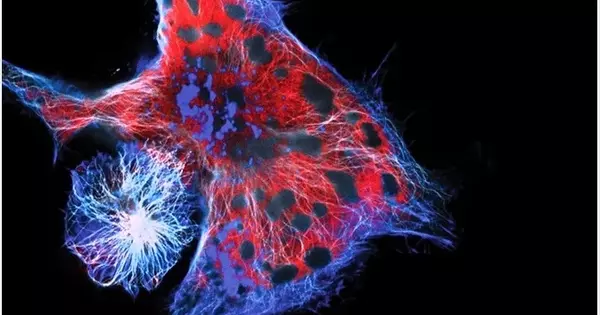Analyzing cell movement under the microscope is a common application of AI in the field of cell biology. There are various techniques for tracking cell movement, such as manual tracking, which is time-consuming and prone to error. AI-based methods, on the other hand, offer faster and more accurate analysis of cell movement.
Researchers can now track cell movement across time and space using artificial intelligence (AI). The method could be extremely beneficial in the development of more effective cancer medications. The massive amount of data obtained by filming biological processes with a microscope was previously an impediment to analysis. Researchers at the University of Gothenburg can now track cell movement across time and space using artificial intelligence (AI). The method could be extremely beneficial in the development of more effective cancer medications.
Under a microscope, studying the movements and behaviors of cells and biological molecules provides fundamental information for better understanding of health-related processes. The study of how cells behave in various scenarios is critical for developing new medical technologies and treatments.
“Optical microscopy has advanced significantly over the last two decades. It allows us to study biological life in both space and time to the smallest detail. Living systems move in all directions and at varying speeds “Jes Pineda, a doctoral student at the University of Gothenburg and the first author of the Nature Machine Intelligence article.
Optical microscopy has advanced significantly over the last two decades. It allows us to study biological life in both space and time to the smallest detail. Living systems move in all directions and at varying speeds.
Jes Pineda
Mathematics describes relationships of particles
Advancements have given today’s researchers such large amounts of data that analysis is nearly impossible. But now, researchers at the University of Gothenburg have developed an AI method combining graph theory and neural networks that can pick out reliable information from video clips.
Graph theory is a mathematical structure used to describe the relationships between different particles in the sample under study. It is analogous to a social network in which particles interact with one another and influence one another’s behavior directly or indirectly.
“The AI method adapts to different situations by using the information in the graph and can solve multiple tasks in different experiments. Our AI, for example, can reconstruct the path that individual cells or molecules take when moving to perform a biological function. This means that researchers can put various medications to the test to see how well they work as potential cancer treatments” Jess Pineda concurs.

Pharmaceutical companies already using AI
AI also allows for the description of all dynamic aspects of particles in situations where other methods would be ineffective. As a result, pharmaceutical companies have already incorporated this method into their R&D processes.
Facts: Networks of neurons Using self-supervised learning, neural networks learn to extract the specific information that a researcher seeks from an image. The tool streamlines the analysis process and allows for the collection of large amounts of detailed information from data-rich videos.
One approach is to use computer vision algorithms to automatically detect and track cells in microscopy images. These algorithms can segment cells from the background, identify their boundaries, and track their movement over time. This can help researchers to quantify various aspects of cell behavior, such as migration speed, directionality, and persistence.
Overall, AI-based analysis of cell movement can provide valuable insights into cell biology, helping researchers to better understand the underlying mechanisms of various cellular processes, such as tissue development, wound healing, and cancer metastasis.
















